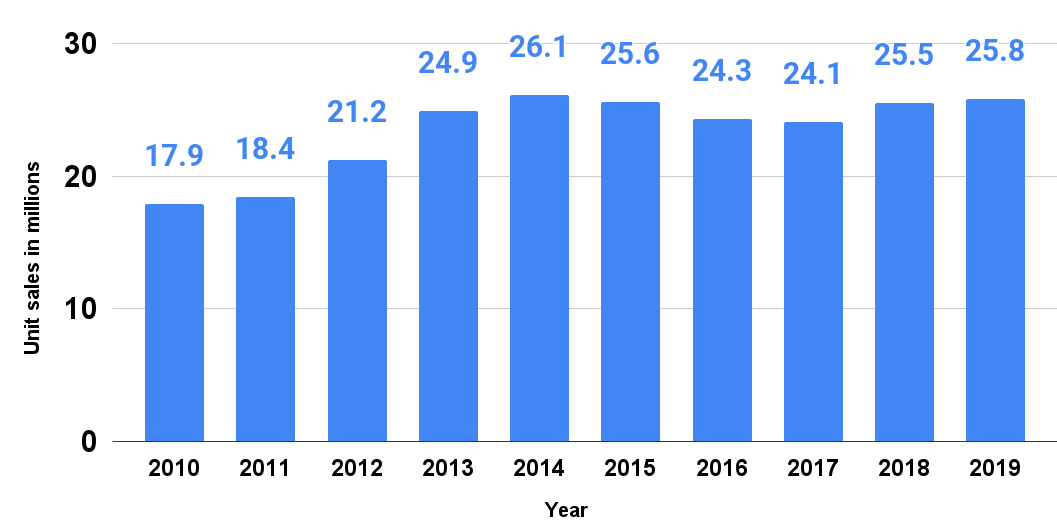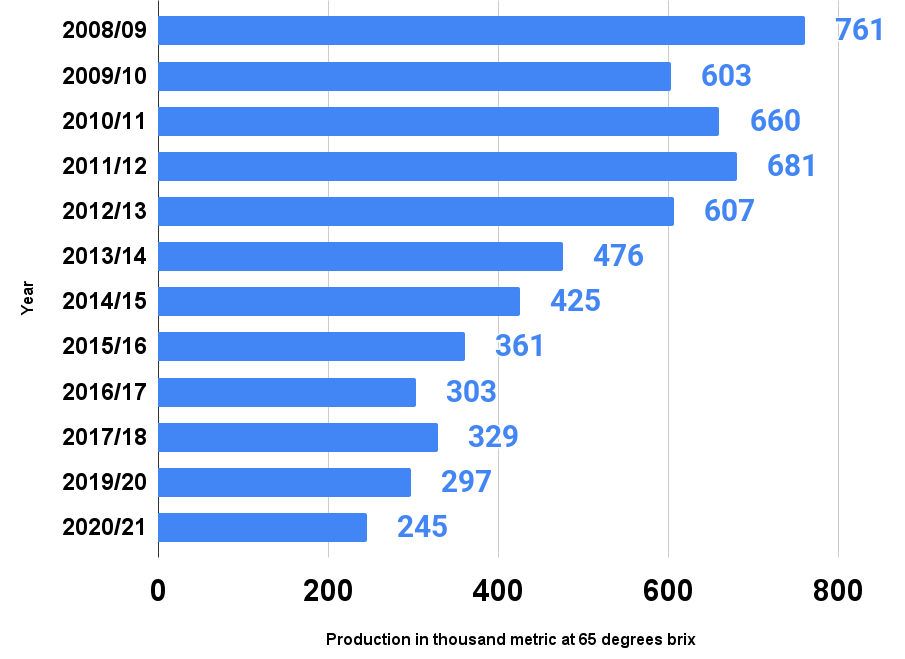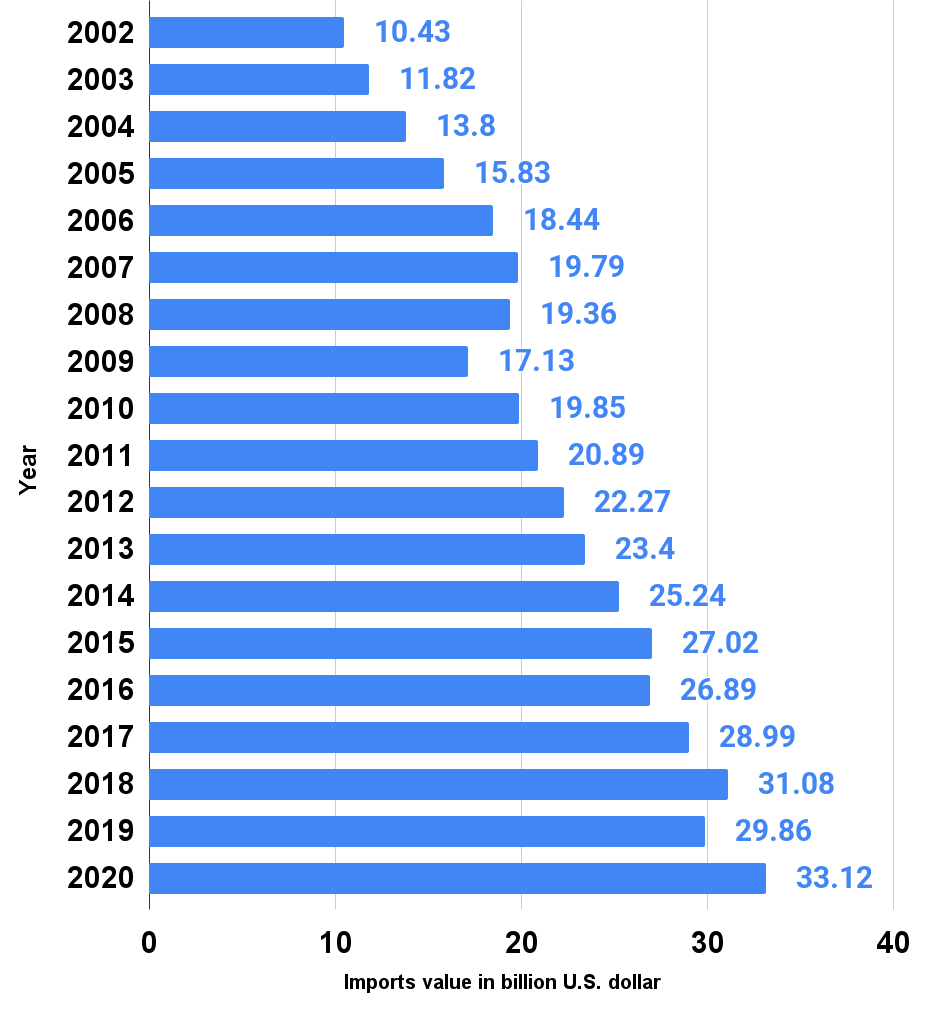- Blenders quickly amassed a lot of popularity when people began to realize how much they could help over their overall health statuses. The same can be said of juicers, but unfortunately, they don’t enjoy the same popularity blenders enjoy because, although they function similarly, blenders are a lot more versatile than juicers, giving them a clear advantage in that sense. In this article, we’ll be exploring the pros and cons of juicer vs blender, so if you’re stuck between getting either of the two, you can have access to vital information that’ll help make the best decision.
- Going on the market to purchase a new appliance can be very daunting, especially now that we live in a world where people just love to sit in the comfort of their homes shopping for whatever they wish to buy. In the blender, you have an appliance with millions of options on the market, making it very hard for you to decide which one is best for you to buy sometimes. To help you through the dilemma of having to choose, we’ll be exploring some of the factors to consider when purchasing a new blender or juicer.
Blenders are growing increasingly popular because they are versatile, and people are beginning to realize just how important they are in the kitchen. According to a post by Melissa Montalto of Eating Well, increasing your vegetables and fruits consumption will do you a lot of good. Recent studies have shown that when you take five or more servings of fruits and vegetables daily, they can help you decrease the risk of stroke by 26%.
The same post reveals that taking fruits and vegetables regularly can also help you reduce the risk of suffering cardiovascular disease. A different study done in King County shows that fruit and vegetable juices provide great antioxidants that play a great role in helping you delay the onset of Alzheimer’s disease. When you consume more fruits, you tend to enjoy lots of benefits, but keeping up with the recommended more than five servings in one day is a bit difficult.
As a result of the increasing importance of consuming fruits and vegetables, blenders and juicers have also become very popular, although the latter is enjoying more popularity than the former. The blender’s versatility is one of the reasons people prefer it to a juicer, and why shouldn’t they? Blenders are also more affordable, so they offer a quicker alternative to fruit and vegetable juices in smoothies that can also be made using fruits and vegetables.
The underrated nature of the blender doesn’t take anything away from it because regardless of what people think, the blender is still a versatile machine that does more than just blending smoothies. Thankfully, there are many wonderful options on the market right now, so no matter what you’re looking for, you’re sure to get an ideal blender that you’ll use for many years. Looking for a blender that can crush ice? A blender under $50? A blender that can make baby food? A blender that is ideal for milkshakes? You’re sure to find whatever it is you’re looking for on the market.
Arne Holst is Statista’s lead researcher for technology and communications, and he provided the information used in providing this chart. The chart above indicates the unit sales of blenders in millions from 2010 to 2019. The chart shows how popular blenders have become over the past few years, helping manufacturers rake in billions of dollars in the process.
The people in the United States, for many years, have realized the importance of blenders in their lives, hence why lots of blenders have been sold in the country over the past decade. Only in 2010, 17.9 million blenders were sold, but that would only prove to be the beginning. The following year, 18.4 million units were bought on the market, and sales skyrocketed for the next three years when 21.2 million, 24.9 million, and 26.1 million units were sold.
Homemade juicing is great, but the chart above also shows that the production of orange juice in the United States over the past decade has not been affected in any way either. Although over the years, the production of orange juice in the country has dropped greatly, there’s no proof that it has anything to do with the increasing popularity of homemade juice. In 2020/21, the U.S. production of orange juice dropped greatly to 245,000 metric tons at 65 degrees.
When you compare the figures that were recorded in 2008/09 (751 metric tons at 65 degrees Brix) to the ones recorded in 2020/21 (245 metric tons at 65 degrees Brix), you’ll realize that the figures dropped greatly since the start of that decade by about over 300%. The years in between also witnessed a series of inconsistencies with the figures rising and dropping in between, but the record 761 metric tons at 65 degrees Brix were never recorded up until 2020/21.
The United States is undoubtedly the biggest appliance market in the world with a market value of $37.8 billion in 2018, but things were never like that. The import value in the country shows how far the country has become, and the figures above prove that the country is a mile ahead of other giant countries like South Korea, Germany, China, and Japan. The chart above shows the import value of the major household appliances in the United States from 2008 to 2020.
What is Juicing?
Juicing, according to The Whole U, is a process that involves the separation of the liquid part of the vegetable or fruit you’re processing from the pulp or fiber. What you’re left with after every juicing process is a thin concentrated liquid product that heavily features minerals, vitamins, and phytonutrients which have proved to have positive health effects being bioactive plant-derived compounds. One of the greatest advantages a juicer has over a blender is that the blender cannot make such a thin and concentrated liquid product that a juicer can make.
Naturally, when it comes to consuming drinkable produce, the first two things that come to people’s minds are juicing and blending, and that’s how formidable the two processes have become. For some people, juicing is what works for them the most because they find the concept of thin and concentrated liquid produce very amusing, after all, they’ll get all the nutrients they need in the liquid produce minus the fiber, which most people think doesn’t matter anyway.
More Information on Juicing
There are three basic styles involved in juicing and include the centrifugal method, masticating method, and cold-pressed method. Of all the three methods, the cold-pressed method is the most efficient because it has 100% retention of live enzymes, minerals, and vitamins from the product. That’s not to say the other two methods are not also efficient, but the centrifugal method involves spinning and chopping produce very quickly while the second involves grinding the produce in a bid to separate the juice from the pulp.
With the other two methods, too much heat is applied to the produce as a result of spinning and grinding motions, and while this may not be harmful to your health, the resulting heat can kill the vital nutrients your body needs to get from the juice as well the live enzymes that will make the nutrient denser. When you’re juicing or blending to lose weight, you have to ensure you’re using the best available method to make the whole process worthwhile.
For some reason, cold-pressed juicers are not as popular as the other types of juicer, and one of the reasons, we believe, is people’s consciousness surrounding the easy access to the other types of juicers. Masticating and centrifugal juicers are more accessible because they’re generally cheaper. What you should know when you decide to invest in those two juicer types is that you won’t be getting the same value for your money as far as you keep prioritizing nutrient density.
A cold-pressed juicer may be more expensive, but when you use it to process your fruits or vegetables, it’ll help retain all the essential nutrients you need in your juice. If you’re looking to get the best value for your money, try as much as possible to invest in a cold-pressed juicer, although its pricing may be a bit discouraging, at the end of the day, it’ll be worth the investment.
Our pros and cons of juicer vs blender will explore the pros and cons of each process, but firstly, let’s take a quick look at some of the pros and cons of a juicer, particularly the cold-press juicer.
Pros
It leaves you with full nutrients and vitamins
We mentioned earlier that with a cold-pressed juicer, you have 100% nutrients and vitamins retention, and that’s one of the juicer’s most important pros. The juicer works in a way that there’s no pulp leftover at the end of the process, making the nutrients readily available to be used for detoxification after they must have found their way into the bloodstream. As much as many people love fiber, drinking juice without the fibrous parts gives your body enough time to skip the time-consuming digestion process.
Your body doesn’t have to go through the process of breaking down foods as the nutrients from the juice will begin to benefit your vital organs as soon as possible. Juicing is one of the best ways to get enough nutrients, minerals, and vitamins into your body without having to stress much.
It doesn’t take time to consume
Another thing you’ll love about juicing is that you can consume more fruits and vegetables in a bottle of juice than you can physically consume in a day. This means that you can process about five pounds of fresh fruits and vegetables into one bottle of cold-pressed juice, and the fact that it doesn’t take time to consume makes it a great choice for many people.
Cons
You can’t use juice as a meal replacement
One common misconception people have about juice is that they can use it to replace regular meals, and as appealing as that may sound, it’s not in any way healthy. The best way to juice is to naturally complement your meals and not to serve as a direct replacement for them. However, if you’re into a juice cleanse, it may be safe for you to replace a meal with juice, but don’t let it become a practice you have to get yourself involved with every time.
Juicers are expensive
This is a common downfall for juicers, and it mostly discourages a lot of people from investing in them, rather, having them opt for a cheaper alternative like the blender.
What is Blending?
Consumption of fruits and vegetables is great for weight management and helps reduce the risk of having chronic heart diseases. However, taking them directly may not be as easy as it sounds, which is why people often use blenders and juicers to process them. Juicing and blending have both proved to be easier than directly consuming vegetables and fruits as a whole. Blending fruits and vegetables puts you in a great place to enjoy your ingredients, turning them into smoothies effortlessly.
The juicing versus blending debate is a hard one to decide because both processes have advantages that give them an edge over the other. Unlike juicing that only leaves you with water-like content that only has the nutrients and vitamins, blending gives you the combination of everything you put into the jar because it blends everything without denying you the opportunity to enjoy your antioxidants and fibers. Also, unlike juice that can’t directly replace meals, smoothies are a great meal replacement because they work great with routine diets.
Blenders have proved to be a cheaper alternative to juicers, and that explains why the former is more popular than the latter and also sells more on the market. A regular blender will help process different compatible ingredients to help you make smoothies, but let’s explore some of the pros and cons of blending below.
Pros
Access to enough fibers and antioxidants
What makes blending different from juicing is that if you’re a big fan of having the full content of your ingredients as a result, you will always love to have your antioxidants and fibers preserved in your smoothies. The fact that you’ll get the full benefits of eating in blending makes blending a great choice because the machine can mix all your ingredients without losing the most important vitamins, nutrients, and live enzymes in your smoothies.
When you blend your fruits and vegetables, you process all the parts including the leaves, seeds, and peels, all of which have their unique nutrients and vitamins. You are guaranteed the antioxidants your body needs to efficiently eliminate toxins with smoothies that are prepared using your blender. This is one of the benefits of blending your vegetables and fruits.
Versatility
You can do almost anything you want with a blender including making milkshakes, crushing ice, pureeing baby food, and every other thing. This is what you can’t enjoy with a juicer because it can only make juice.
Affordability
Juicers, especially cold-pressed juicers, cost a lot of money, but you can get regular blenders for less than $50. When people who are on a budget compare the prices, they’d rather opt for cheap blenders that are versatile than opting for juicers that can only make juice. When it comes to cleaning and maintenance, you have the best option in a blender than you do in a juicer.
Pros
More sugar if you’re not careful
Blending won’t get you the sweet result you’ll get from juicing, and this may tempt you to add more fillers to help improve the taste. When you get used to this, it will defeat the whole purpose of turning to smoothies in the first place, which is to help improve your health. Getting used to the fillers will make you start losing track of the calories you have in your ingredients.
Is it better to juice or blend fruits and vegetables?
It’s hard to tell which one of the two processes is better because, at the end of the day, it’s down to individual preferences. There are factors you have to take into personal consideration to determine which of the two machines is great to have at home. Some of the factors you need to consider include, according to India Kitchen;
- Digestion
- Nutrient absorption
- Calorie intake and weight loss
- Antioxidants and nutrients
Frequently Asked Questions
1. Does juicing take away/remove nutrients?
Juicing doesn’t take away nutrients. However, if you use a masticating juicer to juice, you might lose some of the nutrients you’re supposed to enjoy to the resulting heat from the way the machine operates. This is why we suggest you stick with cold-pressed juicers.
2. Why juice instead of blend?
It’s usually down to personal preferences, but the fact that blenders are more popular on the market than juicers is enough proof that they are highly regarded.
Wrapping Up
The pros and cons of juicing and blenders have always been obvious for people to see. We’ve highlighted some of them in this article, so if you’re looking to purchase any of them, you should take your time to evaluate the pros and cons of each machine before making the big decision. What you should be prepared to do is frequent cleaning and maintenance because it will have a direct impact on your health.
35 MINUTES
ESTIMATED TIME DESIGNING AND UPLOADING THIS ARTICLE
10 HOURS 51 MINUTES
ESTIMATED TIME RESEARCHING AND WRITING THIS ARTICLE
You Might Also Like



